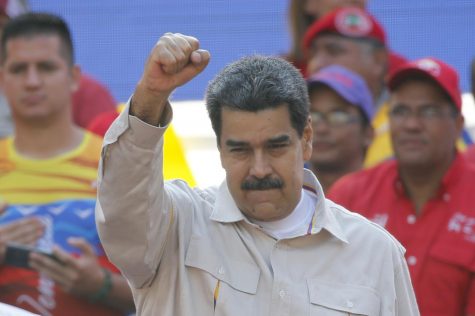Yesterday’s News Today: Venezuela, an echo of past political strife in Latin America
Apr 14, 2019
 With a political situation that seems only to increase in violence, death and confusion, it can be hard to understand what exactly is happening in Venezuela. Though, if one steps back from the constant updates on the worsening condition of the South American nation, it can be seen that this situation is a copy of Latin America’s past political strife. Many of the strategies that President Nicolas Maduro and the U.S. are implementing have their origins in the past political playbooks of Latin America.
With a political situation that seems only to increase in violence, death and confusion, it can be hard to understand what exactly is happening in Venezuela. Though, if one steps back from the constant updates on the worsening condition of the South American nation, it can be seen that this situation is a copy of Latin America’s past political strife. Many of the strategies that President Nicolas Maduro and the U.S. are implementing have their origins in the past political playbooks of Latin America.
As Maduro’s power backslides, the socialist leader has taken cues from the dictators of Latin America’s past in order to cling to what power he has left. These cues include the continued use of armed thugs and atrocities committed by the military as an effort to break up political activism. In fact, Alfonso Cuarón’s “Roma,” a film nominated for several Oscars this year, was about the same dangerous ploys being used in Mexico.
In the 1970s, the Institutional Revolutionary Party of Mexico was in a similar situation to that of Maduro’s government today. Their solution was to wage a “dirty war” against their own people. This included the Corpus Christi Massacre in which government-trained thugs, known as the Halcones, massacred several student protestors with canes and knives. These thugs were not much different from the “counter protesters” employed by Maduro.
That is not to mention the eerie similarities between the Three Culture Square shootings and Maduro’s use of military force.
However, it is Maduro’s exploitation and abuse of the rural population that draws the most resemblance to the PRI. Just as Maduro’s policies have thrust rural Venezuelans into extreme poverty in order to silence their protest, Mexico has economically crippled rural populations with land disputes and even armed conflict. This strategy limits opposition from the rural population, which is often hard to control, through humanitarian crises.
In Venezuela, countless people have died due to lack of food and medicine in rural areas due to Maduro’s suppression. Paul Gillingham, a historian at Northwestern University specializing in Mexican politics, culture and violence told Time Magazine, “Violence happens a lot in the countryside—it was very much a case of out of sight, out of mind, which was also helped by tight control of the Mexican national press.” There is no doubt in my mind that we will learn about the atrocities committed by Maduro in rural Venezuela in time, just as we did with Mexico in 2013.
Then comes the matter of U.S. intervention. It is clear to see that the U.S. is continuing its intervention in Latin America for economic gains while disguising itself as heroic rescuer. A New York Times investigation published March 10 found that U.S. officials were not only lying about aid trucks being burned by Maduro, but covering up the fact that they were destroyed by pro-Guiadó protestors.
This event illustrates that the State Department is not concerned with actually providing aid or political stability to Venezuela, but only in securing its economic assets. That is why the U.S. is ignoring its “champion,” Guiadó, and opening up Venezuela’s oil-rich land to control by foreign companies.
This echoes the political woes of the 1901 Banana Republics as well as the U.S.’s serial involvement in Latin American regime changes. More resources are going into the legal battles of Citgo, rather than to providing relief or devising a strategy to implement democracy in Venezuela. It is clear that the U.S. State Department is content to bank on ancient foreign policy and continue the cycle of instability rather than work with our allies in the European Contact Group on Venezuela to establish a fair election.












